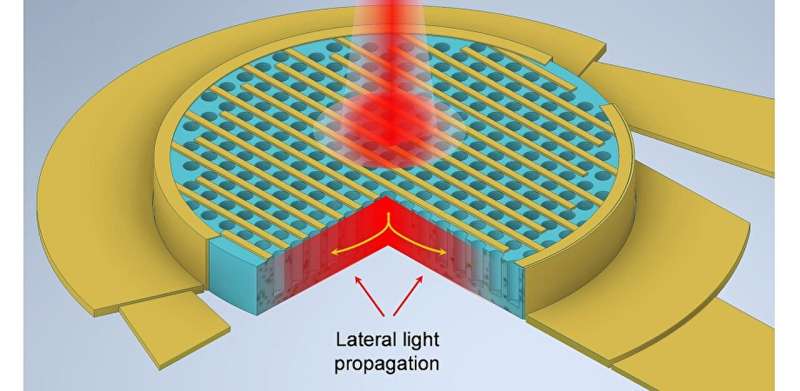This article has been reviewed according to Science X's editorial process and policies. Editors have highlighted the following attributes while ensuring the content's credibility:
fact-checked
trusted source
proofread
Enhanced light absorption in thin silicon photodetectors with photon-trapping structures

Photonic systems are quickly gaining traction in many emerging applications, including optical communications, lidar sensing, and medical imaging. However, the widespread adoption of photonics in future engineering solutions hinges on the cost of manufacturing photodetectors, which, in turn, largely depends on the kind of semiconductor utilized for the purpose.
Traditionally, silicon (Si) has been the most prevalent semiconductor in the electronics industry, so much so that most of the industry has matured around this material. Unfortunately, Si has a relatively weak light absorption coefficient in the near-infrared (NIR) spectrum compared to those of other semiconductors such as gallium arsenide (GaAs).
Because of this, GaAs and related alloys thrive in photonic applications, but are incompatible with the traditional complementary metal-oxide-semiconductor (CMOS) processes used in the production of most electronics. This leads to a drastic increase in their manufacturing costs.
To address this problem, a research team from UC Davis in California is pioneering a new strategy to greatly boost the light absorption of thin Si films. In their latest paper published in Advanced Photonics Nexus, they present the first experimental demonstration of Si-based photodetectors with light-trapping micro- and nano-surface structures, achieving unprecedented performance gains that rival that of GaAs and other group III-V semiconductors.
The proposed photodetectors consist of a micrometer-thick cylindrical Si slab placed over an insulating substrate, with metallic "fingers" extending from the contact metals atop the slab in an interdigitated fashion. Importantly, the bulk Si is filled with circular holes arranged in a periodic pattern that act as photon-trapping sites. The overall structure of the device causes normally incident light to bend by almost 90° upon hitting the surface, making it travel laterally along the Si plane.
These laterally propagating modes increase the propagation length of light and effectively slow it down, leading to more light–matter interaction and a consequent increase in absorption.
The researchers additionally conducted optical simulations and theoretical analyses to better understand the effects of the photon-trapping structures, and performed several experiments comparing photodetectors with and without them. They found that photon trapping led to a remarkable increase in the absorption efficiency over a wide band in the NIR spectrum, staying above 68% and peaking at 86%.
Notably, the observed absorption coefficient of the photon-trapping photodetector was several times higher than that of plain Si and exceeded that of GaAs in the NIR band. Furthermore, although the proposed design was for a 1-μm-thick Si slab, simulations of 30- and 100-nm Si thin films compatible with CMOS electronics showed a similarly enhanced performance.
Overall, the findings of this study demonstrate a promising strategy to boost the performance of Si-based photodetectors for emerging photonics applications. By achieving high absorption even in ultrathin Si layers, the parasitic capacitance of the circuit can be kept low, which is crucial in high-speed systems.
Moreover, the proposed approach is compatible with modern CMOS manufacturing processes, and can thus potentially revolutionize the way in which optoelectronics are integrated into conventional circuits. In turn, this could pave the way for affordable ultrafast computer networks and substantial leaps in imaging technology.
More information: Wayesh Qarony et al, Achieving higher photoabsorption than group III-V semiconductors in ultrafast thin silicon photodetectors with integrated photon-trapping surface structures, Advanced Photonics Nexus (2023). DOI: 10.1117/1.APN.2.5.056001
Provided by SPIE




















